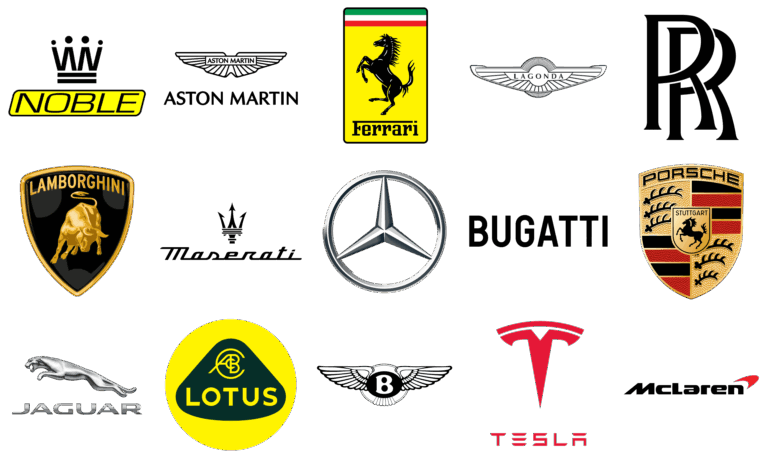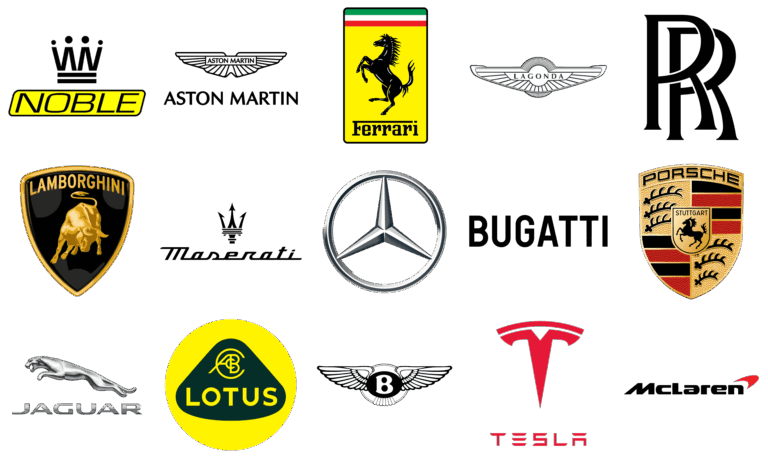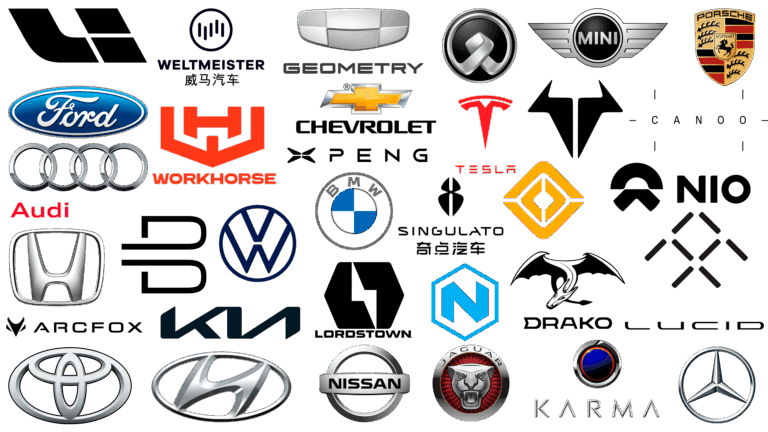Mercury Car Brand: A Journey Through American Automotive History
Mercury Car Brand: A Journey Through American Automotive History cars.truckstrend.com
In the vast tapestry of American automotive history, few brands encapsulate the shifting tides of consumer desire and corporate strategy quite like Mercury. For over seven decades, Mercury served as a pivotal division of the Ford Motor Company, strategically positioned to bridge the gap between the mass-market accessibility of Ford vehicles and the opulent luxury of Lincoln. It was designed to cater to the discerning buyer who sought a step up in style, features, and prestige without venturing into the full extravagance of a high-end luxury marque. From its inception in 1938 until its eventual discontinuation in 2010, Mercury offered a unique blend of practicality, performance, and near-luxury aspirations, leaving an indelible mark on the landscape of American roads and car culture.
The Dawn of Mercury: A Vision for the Middle Ground
Mercury Car Brand: A Journey Through American Automotive History
The story of Mercury begins in 1938, a brainchild of Edsel Ford, son of the legendary Henry Ford. Edsel, known for his keen eye for design and understanding of evolving market trends, recognized a significant void in Ford’s product lineup. While Ford offered reliable, affordable vehicles for the masses and Lincoln provided high-end luxury, there was no intermediate option for customers who desired something more refined and upscale than a standard Ford V8, but weren’t ready or able to afford a Lincoln-Zephyr.
Thus, the Mercury division was born, named after the Roman god of commerce and speed, symbolizing its intended attributes. The first Mercury model, simply called the "Mercury," debuted for the 1939 model year. It shared some components with Ford but featured a longer wheelbase, distinctive styling, and a more powerful flathead V8 engine. Its design, overseen by Edsel himself, was sleek and modern, instantly distinguishing it from its Ford brethren. The initial goal was clear: to offer a "junior Lincoln" or an "upscale Ford," providing a comfortable, stylish, and powerful vehicle at a competitive price point, effectively creating a new market segment for Ford.
The Golden Era: Innovation, Style, and Performance (1950s-1970s)
Following the end of World War II, America experienced an economic boom, and with it, a burgeoning demand for automobiles. The 1950s and 1960s marked Mercury’s "golden era," a period of significant expansion, innovation, and distinct brand identity. Mercury models became synonymous with bold styling, powerful engines, and a certain swagger.
Iconic Models and Design Philosophy:
- Montclair and Monterey: These full-size sedans and coupes became hallmarks of 1950s automotive design, characterized by their chrome accents, two-tone paint schemes, and imposing presence. They were direct competitors to Oldsmobile, Buick, and Dodge, offering a blend of style and performance that appealed to a growing middle class.
- Cougar: Launched in 1967, the Mercury Cougar was arguably the brand’s most successful and enduring nameplate. Positioned as a more refined, luxurious, and slightly larger pony car than the Ford Mustang, the Cougar quickly gained popularity. Its sleek lines, hidden headlamps, and sequential turn signals made it instantly recognizable. It evolved through several generations, including performance-oriented Eliminator models and later, personal luxury coupes.
- Marauder: First appearing in the early 1960s, the Marauder was Mercury’s answer to the muscle car craze. It was a full-size car with a potent big-block engine, designed for high-speed cruising and performance. The later 2003-2004 Marauder, a performance sedan based on the Grand Marquis, became a cult classic for its blend of understated looks and powerful V8 engine.
- Comet: Introduced in 1960, the Comet started as a compact car, sharing a platform with the Ford Falcon. It gradually grew in size and power, eventually becoming a mid-size vehicle.
- Grand Marquis/Marquis: These full-size sedans became the quintessential Mercury models for decades, especially from the 1970s onwards. Known for their spacious interiors, comfortable rides, and traditional American styling, they became popular choices for families and later, for those seeking a reliable, large sedan.
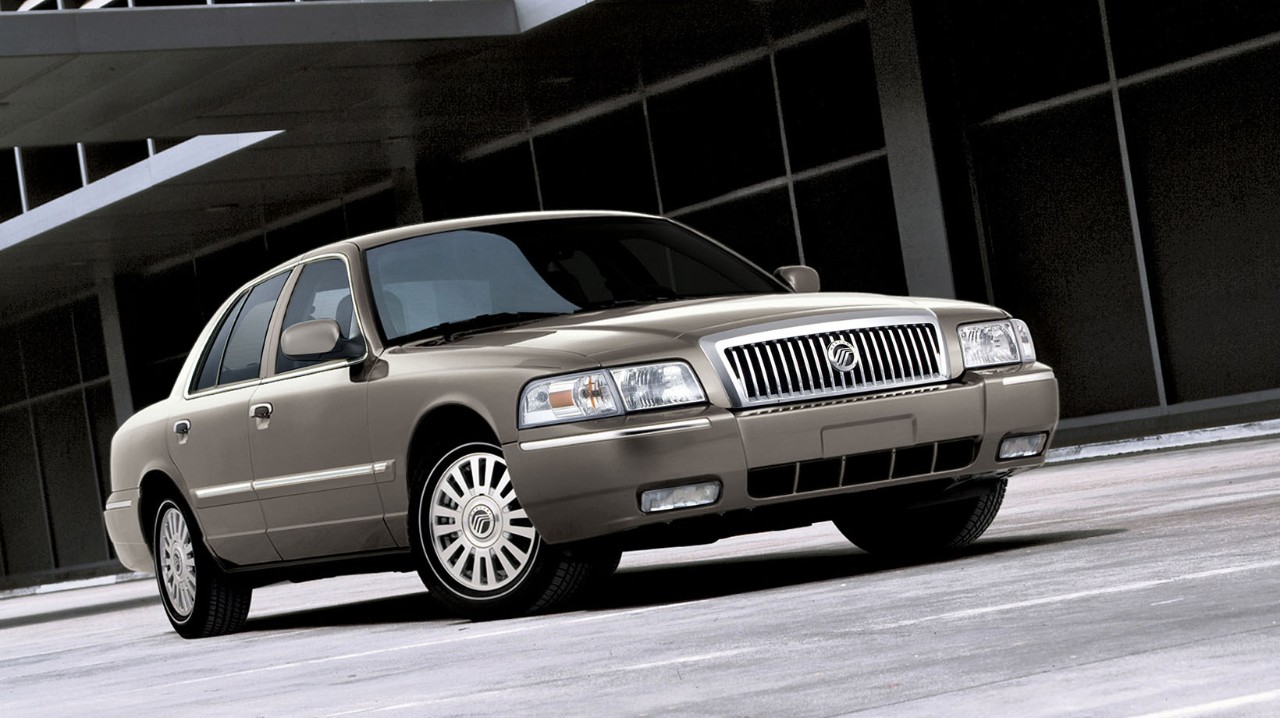
During this period, Mercury’s advertising often emphasized its distinctiveness, positioning it as "The Sign of the Cat" (referencing the Cougar) or highlighting its "Lincoln-like ride" and "Ford-like economy." The brand successfully carved out its niche, appealing to customers who appreciated understated elegance and solid performance.

Navigating the Challenges: Reinvention and Rationalization (1980s-2000s)
The automotive landscape shifted dramatically in the 1970s and 1980s, driven by oil crises, stricter emissions regulations, and increasing competition from fuel-efficient, well-built Japanese and European imports. Mercury, like other American brands, had to adapt. This era saw a greater emphasis on platform sharing with Ford, a strategy that, while cost-effective, began to erode Mercury’s distinct identity.
Key Developments and Models:
- Sable: Introduced in 1986, the Mercury Sable was a groundbreaking aerodynamic sedan, sharing its platform with the highly successful Ford Taurus. Its distinctive light bar across the front fascia set it apart. The Sable became a strong seller, offering a modern, efficient, and comfortable alternative to traditional sedans.
- Grand Marquis’s Resilience: While many models came and went, the Grand Marquis remained a constant, serving as a reliable and spacious workhorse for many American families and older buyers who preferred its traditional body-on-frame construction and V8 power.
- Entry into New Segments: Mercury expanded into new segments with models like the Villager minivan (a rebadged Nissan Quest) and the Mountaineer SUV (based on the Ford Explorer). These vehicles aimed to capture market share in the rapidly growing family and utility vehicle segments.
- Badge Engineering Challenges: As platform sharing became more prevalent, Mercury models often became little more than rebadged Fords with minor cosmetic changes and slightly different trim levels. Models like the Mystique (based on the Ford Contour) and Tracer (based on the Ford Escort) struggled to establish a strong separate identity, leading to consumer confusion and a dilution of the brand’s unique appeal.
- Attempts at Rejuvenation: In the early 2000s, Ford made a valiant attempt to inject some excitement back into Mercury with the reintroduction of the Marauder (2003-2004). This performance-oriented Grand Marquis, equipped with a powerful V8, aimed to recapture the spirit of Mercury’s performance heritage. However, it was a niche product and didn’t significantly alter the brand’s trajectory. Similarly, the Milan sedan (based on the Ford Fusion) was a stylish, well-received car, but it too struggled to differentiate itself enough from its Ford counterpart.
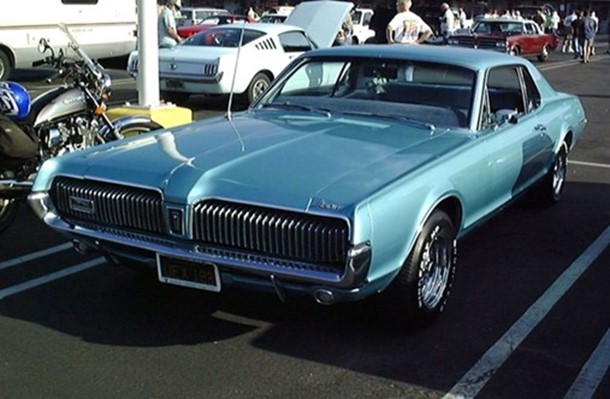
The Decline and Dissolution: Why Mercury Faded Away
By the late 2000s, the writing was on the wall for Mercury. Several factors contributed to its eventual demise:
- Lack of Clear Brand Identity: The most significant issue was the erosion of Mercury’s distinctiveness. As more models became "badge-engineered" versions of Fords, consumers found little reason to choose a Mercury over a Ford, especially when the price difference was minimal. The "middle ground" had become too crowded, and Mercury struggled to define its value proposition.
- Increasing Overlap with Ford and Lincoln: Ford’s strategy shifted towards focusing on its core brands. Lincoln was being repositioned as a true luxury brand, and Ford itself was offering increasingly upscale trim levels (e.g., Ford Fusion Titanium, Ford Explorer Limited) that blurred the lines with Mercury’s offerings.
- Economic Downturn: The global financial crisis and the automotive industry downturn of 2008-2009 put immense pressure on automakers to streamline operations and cut unprofitable divisions. Mercury, with its declining sales and unclear market position, became an obvious candidate for consolidation.
- Changing Consumer Preferences: The traditional large sedans that Mercury excelled at (like the Grand Marquis) were losing market share to SUVs and crossovers, a segment where Mercury’s offerings were often just rebadged Fords.
On June 2, 2010, Ford Motor Company announced its decision to phase out the Mercury brand, with production ceasing at the end of 2010 for the 2011 model year. The last Mercury vehicle, a Grand Marquis, rolled off the assembly line on January 4, 2011.
Mercury’s Enduring Legacy: Collectibility and Nostalgia
Despite its discontinuation, Mercury continues to hold a special place in the hearts of many automotive enthusiasts and collectors. Its legacy is preserved through the cars that still roam the roads and the vibrant communities of owners and fans.
- Collectibility: Certain Mercury models have become highly sought after by collectors:
- Early Cougars (1967-1970): Especially the XR-7, Eliminator, and Boss 302 variants, are prized for their classic pony car styling, performance, and historical significance.
- 1950s Lead Sleds: The customized, chopped, and lowered Mercury coupes of the early 1950s (particularly the 1949-1951 models) are iconic in hot rod and custom car culture.
- Marauder (2003-2004): These limited-production performance sedans have developed a strong cult following due to their understated appearance, powerful V8 engine, and rarity.
- Classic Full-Sizes: Models like the Montclair, Monterey, and Park Lane from the 1950s and 60s are appreciated for their flamboyant styling and historical charm.
- Impact on American Car Culture: Mercury cars were often featured in movies, TV shows, and music, cementing their place in popular culture. They represented a certain era of American design and aspirations.
Owning a Mercury Today: Practical Advice for Enthusiasts and Buyers
For those considering purchasing a used Mercury today, whether for daily driving or as a collector’s item, several practical considerations apply:
- Parts Availability: This is generally good, especially for later models (1980s-2011) that shared many components with Ford vehicles. Ford’s extensive parts network means that common mechanical parts are often readily available. However, unique Mercury-specific body panels, trim pieces, and interior components for older or rarer models can be harder to find and may require searching specialty suppliers or salvage yards.
- Reliability: Many Mercury models, particularly the Panther platform cars (Grand Marquis, Marauder, late-model Cougar), are known for their robust, durable construction and straightforward mechanicals, making them relatively reliable and easy to maintain. Earlier models’ reliability can vary depending on their maintenance history.
- Maintenance: Most mechanics familiar with Ford vehicles will be able to service a Mercury. Routine maintenance is generally affordable.
- Insurance and Registration: These are typically similar to comparable Ford models. Classic Mercury vehicles may qualify for classic car insurance, which can be more affordable.
- Finding a Good Mechanic: Seek out mechanics with experience working on older American vehicles, particularly Fords.
- Community and Owner Groups: Numerous online forums, social media groups, and car clubs are dedicated to Mercury vehicles. These communities are invaluable resources for advice, parts sourcing, and connecting with fellow enthusiasts.
Mercury Car Brand: Approximate Used Price Guide
Given that Mercury vehicles are no longer produced, a traditional "new car price table" is not applicable. Below is a guide to typical used market values for various popular Mercury models. These prices are highly variable and depend on factors such as the vehicle’s condition (e.g., show car vs. daily driver), mileage, year, specific trim level, geographic location, and market demand.
| Model Name | Production Years | Typical Used Price Range (USD) | Notes |
|---|---|---|---|
| Mercury (1939-1941) | 1939-1941 | $15,000 – $60,000+ | Early models, often customized as "Lead Sleds." Prices vary wildly based on originality vs. custom build quality. |
| Monterey / Montclair | 1950s – 1970s | $8,000 – $40,000+ | Iconic 1950s models command higher prices. Later generations are more affordable. Condition is key. |
| Cougar (1st Gen) | 1967-1970 | $15,000 – $70,000+ | Highly collectible, especially XR-7, Eliminator, and Boss 302 variants. Condition, originality, and engine type significantly impact value. |
| Cougar (Later Gens) | 1971-2002 | $2,000 – $15,000 | Later personal luxury coupes are generally more affordable. The last generation (1999-2002) is a FWD compact, very budget-friendly. |
| Comet | 1960-1977 | $5,000 – $25,000 | Early compact models are gaining collector interest. Later, larger models are more accessible. |
| Marauder (Classic) | 1963-1965 | $10,000 – $40,000+ | Sought-after muscle car era full-size performance. |
| Grand Marquis | 1975-2011 | $1,500 – $10,000 | Very common and reliable. Higher prices for low-mileage, well-maintained later models. Excellent value for a spacious, comfortable sedan. |
| Sable | 1986-2009 | $1,000 – $5,000 | Affordable daily drivers. Prices depend heavily on mileage and condition. |
| Villager | 1993-2002 | $800 – $3,000 | Practical, budget-friendly minivan. Parts availability good due to Nissan Quest sharing. |
| Mountaineer | 1997-2010 | $1,500 – $6,000 | SUV based on Ford Explorer. Good value for an SUV, but watch for common Explorer issues (e.g., transmission, suspension). |
| Mystique | 1995-2000 | $800 – $2,500 | Entry-level sedan, very affordable. |
| Marauder (2003-2004) | 2003-2004 | $10,000 – $30,000+ | Cult classic. Prices are strong and appreciating for well-maintained, low-mileage examples due to limited production and performance appeal. |
| Milan | 2006-2011 | $2,000 – $7,000 | Modern sedan based on Ford Fusion. Good value for a reliable, relatively modern car. |
| Mariner | 2005-2011 | $2,000 – $8,000 | Compact SUV based on Ford Escape. Practical and economical. |
(Note: Prices are estimates as of late 2023 and can fluctuate. Always conduct thorough research and inspection before purchasing a used vehicle.)
Frequently Asked Questions (FAQ) About the Mercury Car Brand
Q: When did Mercury stop making cars?
A: Ford Motor Company officially ceased production of Mercury vehicles at the end of 2010, with the last vehicle rolling off the assembly line in January 2011.
Q: Why did Ford discontinue Mercury?
A: Mercury was discontinued primarily due to a lack of clear brand identity, increasing overlap and "badge engineering" with Ford models, declining sales, and Ford’s strategic decision to focus resources on its core Ford and Lincoln brands, especially after the 2008 economic downturn.
Q: Are Mercury parts hard to find?
A: For most models, especially those from the 1980s onwards, parts are generally not hard to find because Mercury vehicles shared a significant number of components with their Ford counterparts. Many mechanical and even some body parts are interchangeable with Ford models. However, unique Mercury-specific trim pieces or very old model components may require searching specialty suppliers or salvage yards.
Q: Is a Mercury a good used car purchase?
A: Many Mercury models, particularly the Grand Marquis, Milan, and Mariner, are known for their reliability, durability, and value as used cars. They often offer a comfortable ride and practical features at an affordable price. As with any used car, a pre-purchase inspection is highly recommended.
Q: What was the most popular Mercury model?
A: The Mercury Cougar (especially the first generation) and the Mercury Grand Marquis were arguably the brand’s most popular and enduring nameplates. The Cougar was a successful pony car/personal luxury coupe, while the Grand Marquis became the quintessential large American sedan for decades.
Q: What was Mercury’s relationship with Ford and Lincoln?
A: Mercury was a division of Ford Motor Company, positioned between the mainstream Ford brand and the luxury Lincoln brand. Its purpose was to offer "near-luxury" or "upscale" vehicles that were a step above Ford but not as expensive as a Lincoln, filling a specific market segment.
Q: What are some collectible Mercury models?
A: Highly collectible Mercury models include the early 1939-1941 sedans (often customized as "Lead Sleds"), the first-generation Mercury Cougar (1967-1970), the 1950s Montclair and Monterey, and the limited-production 2003-2004 Mercury Marauder.
Conclusion
The Mercury car brand, though no longer producing vehicles, remains a fascinating chapter in American automotive history. Born from a vision to occupy the "middle ground" between mainstream and luxury, Mercury delivered distinctive styling, robust performance, and a touch of refinement for over 70 years. From its iconic Cougars and Grand Marquis to its experimental designs, Mercury vehicles were a familiar sight on American roads, reflecting the aspirations and changing tastes of generations. While ultimately succumbing to market shifts and strategic re-evaluations, Mercury’s legacy endures in the classic car community, a testament to its unique contribution and the indelible mark it left on the automotive landscape. It serves as a reminder that even established brands must constantly evolve, or risk becoming a cherished memory in the rearview mirror of history.

